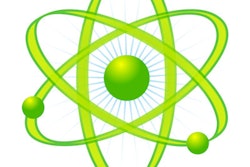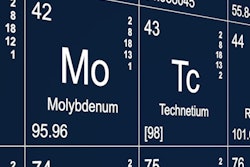
It's the end of an era in Chalk River, Ontario, as the National Research Universal (NRU) nuclear reactor goes offline for the final time on March 31. The reactor has been a key source of molybdenum-99 (Mo-99), the precursor to the widely used radiopharmaceutical technetium-99m.
The NRU reactor first fired up in 1957. Under the watch of Atomic Energy of Canada (AECL), the NRU facility over the decades served as the primary source of medical isotopes throughout North America and was the majority supplier of Mo-99 to U.S. healthcare facilities.
The reactor became the center of controversy in May 2009 when it was shut down due to a major water leak. Its forced closure created a severe global medical isotope shortage, which was highlighted in a June 2009 poll of members from the Society of Nuclear Medicine (now the Society of Nuclear Medicine and Molecular Imaging). Of the survey respondents, 90% confirmed that the lack of medical isotopes adversely affected their practice or facility because they could not perform or had to delay some patients' nuclear imaging scans.
The Mo-99 shortfall in 2009-2010 was further exacerbated by issues at nuclear reactors in the Netherlands, Belgium, France, and South Africa, which all went offline in the first quarter of 2010 for planned maintenance or refueling.
It took until August 2010 to complete repairs on the NRU reactor and resume Mo-99 production. It wasn't long, however, before the reactor was shuttered again in May 2011 for one month to inspect the repairs from nine months earlier.
The Canadian Nuclear Safety Commission renewed AECL's license for five years beginning in October 2011, so it could continue to fulfill approximately half of the demand for Mo-99 in North America.
Before the license expired, the Canadian government extended the reactor's service life beyond its scheduled final closure. The commission approved a February 2015 recommendation to extend Mo-99 production through end of the March 2018 to help support global demand in cases of unexpected shortages.
On March 31, the NRU will go dark for the last time. Given the events over the past nine years, the reactor's most notable legacy could be that it helped create the current state of camaraderie among the nuclear medicine community worldwide.
Entrepreneurs and researchers are currently exploring and developing alternative methods of producing Mo-99, as well as new radioisotopes to advance patient care and avoid shortages in the future.




















